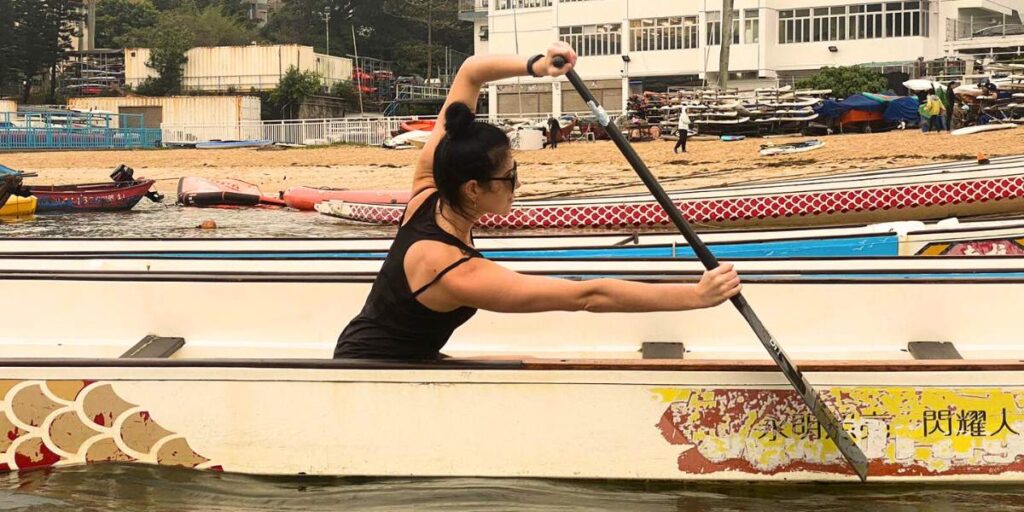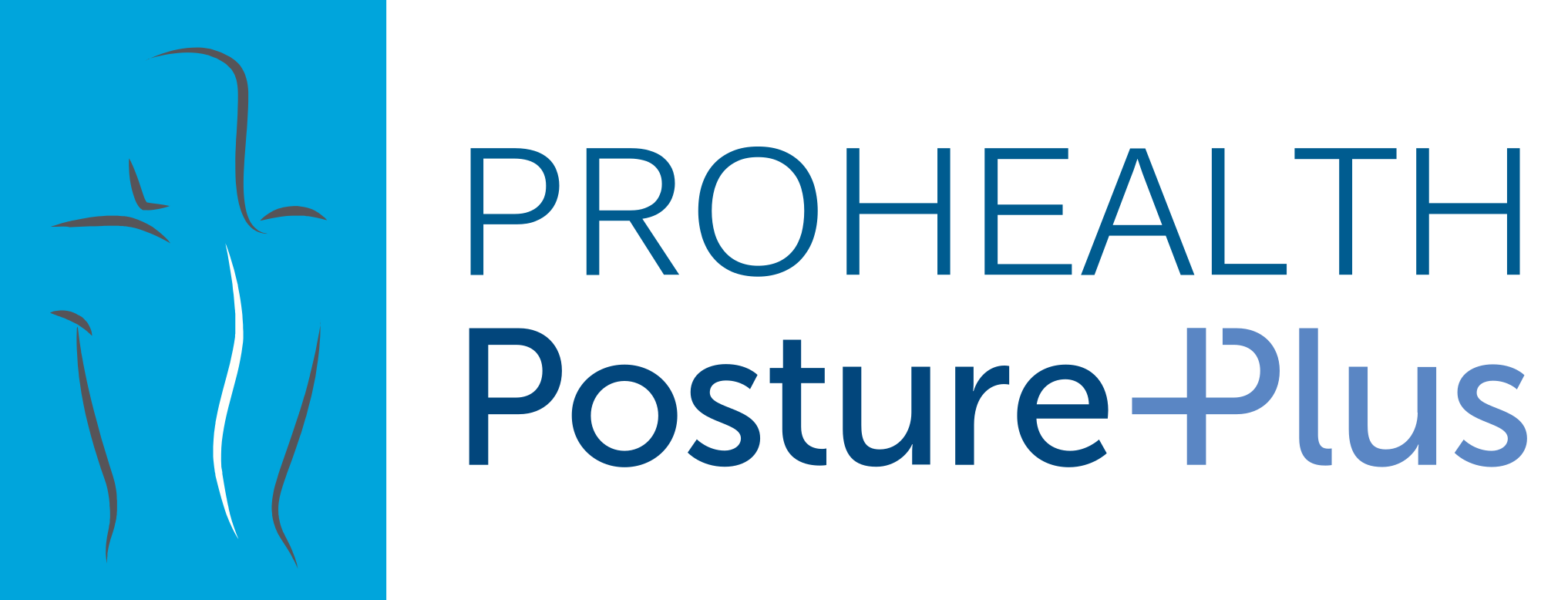
Dragon Boating Injuries and Prevention
Dragon boating is an iconic sport of Hong Kong! With the season’s training well underway, paddlers are preparing for the fun-filled festival in June. Whether you’re an experienced paddler or trying the sport for your first season, the opportunity for injury is unfortunately inevitable. Proper training with an appropriate technique is key in helping to avoid injury.
Below are some examples of common dragon boating injuries which you may experience, possible causes of such injuries, and some tips on how to prevent them.
Firstly, let’s have a look at the correct paddling technique!
What should dragon boat paddling look like?
- 18-20 paddlers on the boat, with the drummer seated at the front and the steersman at the back of the boat.
- Paddlers seated in pairs, with partners demonstrating a mirror-image of each other.
Dragon Boating’s Start Position: The ‘A’ Frame:

- Seated on the bench, with the outside leg slightly bent and the foot locked in front, and the inside leg bent underneath the seat and foot locked in behind.
- The trunk should be slightly rotated towards the inside of the boat, leaning forwards from the hips.
- The outside arm holds the paddle close to the blade and straight out in front, while the inside arm holds the top of the paddle above the head.
- The head should be looking diagonally forward to the front paddler on the opposite side.

Motion Phase – Catch, Pull, Exit, Recovery:
- The top hand drives the paddle down at approximately a 60 degree angle to fully bury the blade in the water (catch).
- The arms remain fairly rigid, as the back and leg muscles extend and rotate the trunk to an upright position, whilst ‘pulling’ the paddle through the water.
- Legs maintain the locked position, but use power to drive the boat forward as the trunk sits upright.
- The top hand lifts sharply to ‘exit’ the blade when it reaches the hip.
- Once the paddle is out of the water, the bottom hand pushes the blade forwards as the trunk rotates back towards the inside of the boat, in order to return to the start position (recovery).
- The head should remain still (diagonally forwards) throughout the movement in order to follow the timing of front paddlers.
Common Injuries in Dragon Boating
According to a previous study of competitive dragon boating, 99% of dragon boat-related injuries occurred during training. The majority of injuries were caused by overuse (56.3%) and around half of the injuries were muscle-tendon strains (50.5%).
The chart below shows the body-parts most commonly affected from dragon boating.

Common Causes of Dragon Boating Injuries
Lower Back Pain
- Often due to repetitive trunk rotation
- Weakness of the core stability muscles can cause overuse of the back extensor muscles resulting in increased tension and pain
Shoulder pain / tendon strain
- Overuse of the arms and shoulders when paddling, due to lack of involvement from the core and trunk motion
- General upper body weakness may also play a part
Neck pain
- Not focusing on the front paddlers and allowing the head to move, may cause the neck to move in an awkward way due to the jerky motion of the boat.
Elbow / wrist pain
- Overuse of the forearm muscles due to poor activation of the core and trunk rotation can result in wrist or elbow pain.
- Gripping the paddle too hard can also contribute to this!
Buttock / knee pain
- Pain in the lower limbs can occur from moving back and forward whilst maintaining the locked squat position.
Other Injuries that are fairly common in dragon boating include non-musculoskeletal injuries such as abrasions, blisters and sunburns,
How to Prevent Dragon Boating Injuries
The best steps you can take to minimise the risk of injuries from dragon boating is to ensure proper technique, stretch and incorporate strengthening exercises in you training.
1. Ensure Proper Technique
- Make sure that you train with an experienced coach or team in order to master the correct technique before racing
- IMPORTANT! Make sure you train on both sides – although most people have a ‘preferred’ side for racing, it’s important to train on both sides to avoid excessive muscle imbalance by overusing just one side.
2. Stretching (Pre and Post-Paddling)
Our physiotherapist and in-house paddler Natalie shares the best stretches for dragon boaters in this video below.
Lunge (optional trunk rotation)
- Take a big step forward or back, so that both knees are bent to around 90 degrees
- Whilst keeping the spine upright and neutral, tilt the pelvis slightly backward so you feel a stretch in the front of the hip of the back leg.
- Optional: rotate the spine towards the front leg, to feel an additional stretch in the trunk.
Trunk side-flexion – lats / QL
- Stand with your feet hip-width apart and looking straight ahead
- Lift one hand above your head and slowly reach over to one side until you feel a stretch in the opposite side of the trunk
- Maintain the stretch without twisting or leaning forward.
Glutes / piriformis
- Seated with a neutral spine, cross one ankle over the opposite knee
- Gently press on the open knee to increase the stretch
- If able, gently lean the trunk forward from the hips, maintaining the neutral spine, to further increase the stretch.
Hamstrings
- Standing with your weight on one leg, place the opposite heel down in front of you
- Keep your spine neutral whilst hinging forward from your hips, until you feel a stretch in the back of the front leg
- Optional: if you need more stretch, you can place the front heel up onto a step or small stool.
Posterior shoulder
- Standing in a neutral position, bring one arm straight across the body at shoulder-height
- Use the opposite arm to lightly press the elbow to increase the stretch.
Pectorals
- Standing in a doorway or the corner of a room, bring both arms up to 90 degrees shoulder-height
- Gently move your weight forward until you feel a stretch in the front of the chest
- Repeat with your arms up to 120 degrees, and again at 170 degrees.
Wrist flexor / extensor stretch
- Sitting or standing, lift one arm straight up in front of you with the palm facing away and fingers pointing up
- Use the other hand to gently pull the wrist and fingers towards you until you feel a stretch in the forearm.
- Then release, and lightly make a fist as you let the knuckles move down and point towards the floor
- Gently use the opposite hand to increase the stretch in the opposite side of the forearm
3. Strength Training
Trunk Rotation with Theraband
Static Rotation:
- Stand with your feet shoulder width apart, with a theraband tied to one side of you at approximately shoulder height
- Hold the band with both hands, and keeping the arms straight, engage the core as you rotate to pull the band straight in front of you
- Keep the core engaged and the body still to resist the rotational pull from the theraband
- Option: start with and maintain a split stance as you perform the exercise
Dynamic Rotation:
- Sitting in your dragon boat start position, hold your paddle (or stick) with a theraband attached by your bottom hand
- Lean the trunk back to an upright position at the same time as rotating towards the paddle side
- Pull the paddle against the resistance of the theraband, to mimic the resistance of the water when paddling
- Return to the start position and then repeat (Repeat on both sides)
Shoulder Stability with Theraband / Cable Work
- Tie a theraband in front of you at shoulder height
- Stand with both arms straight in front of you, holding the theraband in each hand.
- Stabilise the core and the shoulder blades, before bending the elbows, pulling the theraband into a row position.
- Ensure you keep the back and neck still, slowly release and repeat.
Abdominal Work – Straight
- Lie on your back with your knees bent and your feet flat on the floor
- Lightly support your head and neck while you perform a small abdominal crunch
- To avoid injuries, make sure the abdominals do not bulge out, and the chin doesn’t poke forwards as you lift.
- Optional – to train the obliques (which run along the side of your core), rotate one shoulder towards the opposite knee as you curl up
4. Be Prepared & Train Smart!
Make sure to prepare the correct clothing and kit; such as gloves, seat-pad, hat, long sleeves, sunscreen.
Finally, it is also important to listen to your body and recognise when to take a break from training to avoid overuse injuries
Need Any Help? Reach Out to Us!
If you have sustained an injury which hasn’t settled with rest, and would like further advice on treatment and rehabilitation, please contact your physiotherapist. Our experienced physiotherapists at Posture Plus offer hands-on treatments for a variety of conditions that affect the musculoskeletal and neural systems.
Equally, if you are considering taking up the sport but are concerned that you may not have adequate strength or stability, you can contact your physiotherapist to arrange a pilates-based, posture and core stability assessment and rehabilitation programme.
Our team of physiotherapists are professional and experienced in working with clients of all ages and treatments are always personalised to their recovery needs. Working with our physios, you will receive a detailed assessment to fully understand the root cause and identify areas requiring treatment. From there, we then develop a program to help clients return to full mobility and function, with advice on exercises and activities to minimise the risk of re-injury.
References
Mukherjee S, Leong HF, Chen S, Foo YX, Pek HK. Injuries in Competitive Dragon Boating. Orthop Journal of Sports Medicine. 2014;2:1–9. doi: 10.1177/2325967114554550.
Leave a reply